Everything you need to know about the cotoneaster
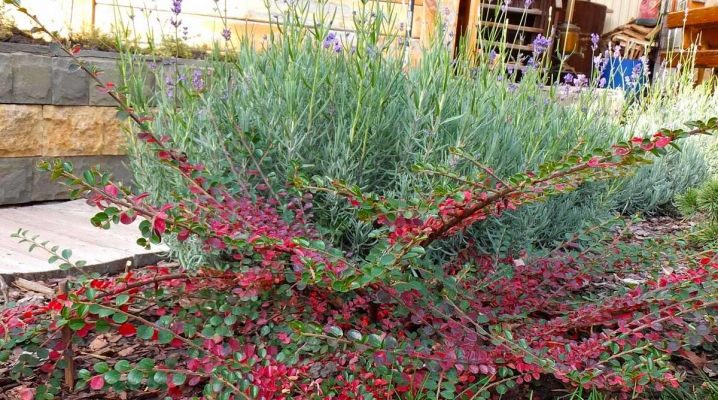
Cotoneaster is a plant of the genus thornless shrubs. It has a beautiful decorative appearance, so it can be planted in a summer cottage as a decoration. The article will discuss the main features of this vegetation, how it should be planted, how to care for it.
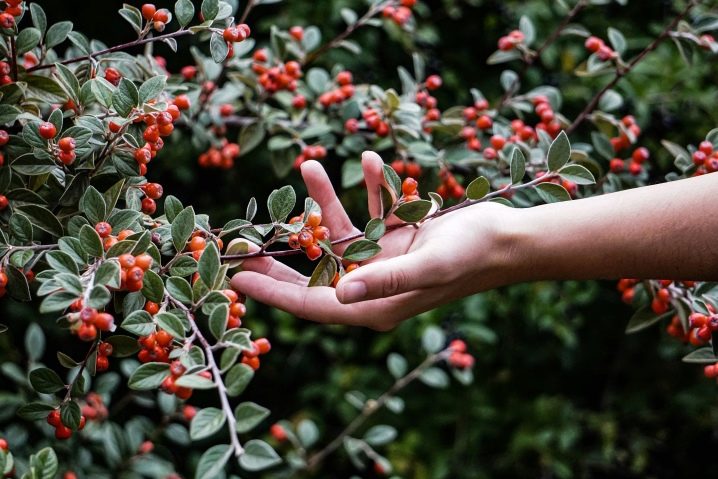
general description
The cotoneaster is an evergreen or deciduous plant in the form of a bush. Sometimes it looks like small trees. The height of each bush can be from 30 cm to 2 m. Leaf blades are small, simple and regular. And also the foliage is entire, its shape is ovoid.
On the underside, the leaves are gray-green in color. The upper part is colored dark green. In the fall, they take on a red color. The cotoneaster blooms in June. At the same time, the flowers grow white or pink, they are small in size, can be located alone or gather in inflorescences in the form of shields or brushes.
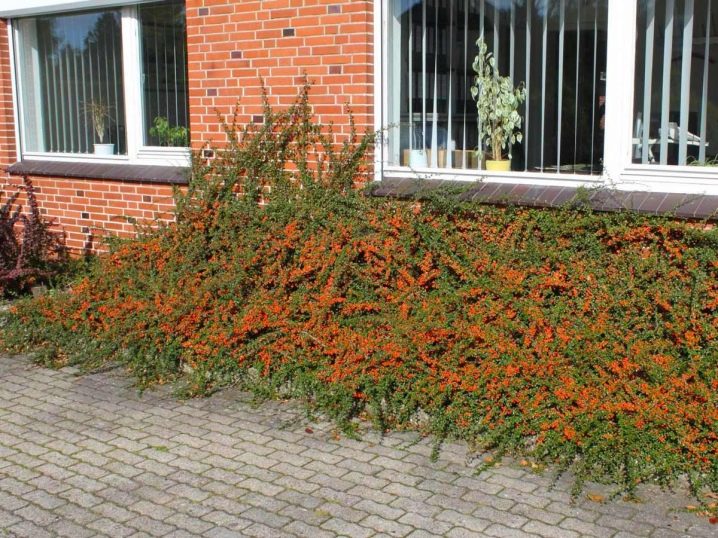
The cotoneaster is common in Europe, Asia, North Africa, and North America. It grows, as a rule, both on plains and in highlands. Vegetation berries are inedible. They have a deep red color, they can also be orange or dark blue.
The shape of the bushes themselves can be different.
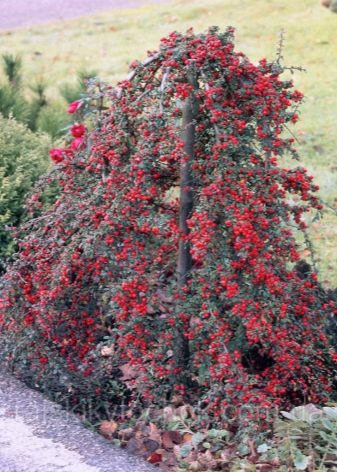
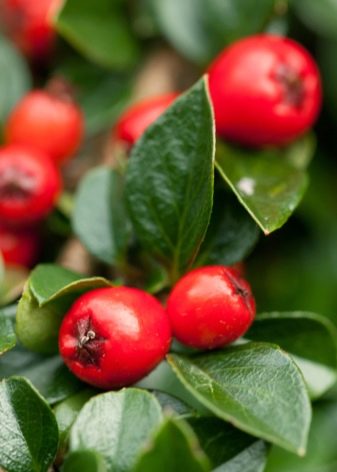
Types and varieties
Let us examine the features of some individual species and varieties of such vegetation.
Dammer
This plant is an evergreen and undersized shrub. Its height can reach 150 cm. Dammer's cotoneaster forms creeping branches that are able to take root. The foliage does not crumble before frost, the leaf blades are elliptical, solid. In the winter season, spherical coral berries remain on the shoots. They contrast perfectly with the green foliage. The fruits contain several nuts. But it is worth noting that the cotoneaster is hard to tolerate low temperatures.
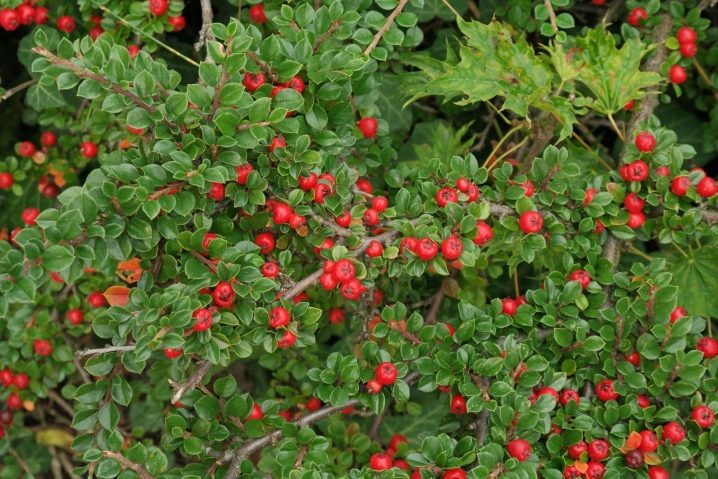
"Coral Beauty"
This dwarf hybrid shrub grows up to one meter in height. It is distinguished by elongated and bent creeping shoots. Coral Beauty blooms in late spring or early summer. The leaf blades have a light shiny bloom. During flowering, a large number of snow-white flowers are formed on the bushes; later, fruits of a rich red color are formed on them. It is better to grow such a cotoneaster in well-lit areas or in partial shade.
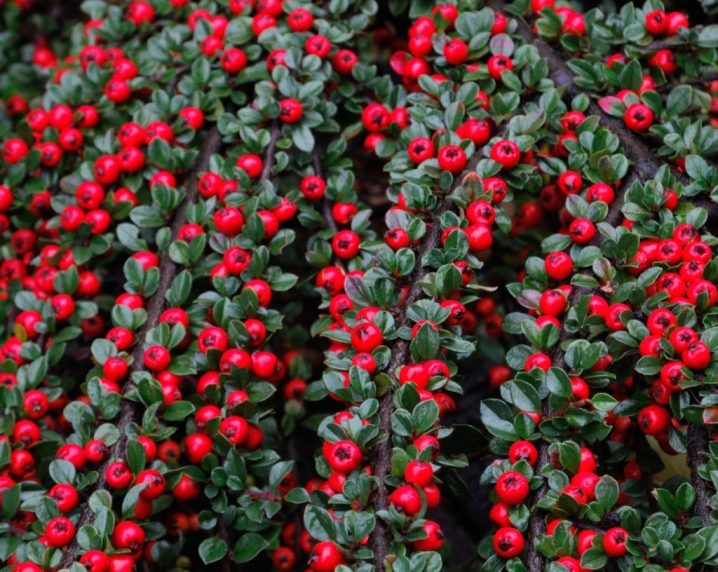
Eicholz
This evergreen shrub grows up to 25 centimeters in height. It is characterized by the most branched shoots that spread over the entire surface of the earth. The leaves of such bushes are dark green. In the autumn months, they take on an orange hue. Vegetation blooms in May-June. At the same time, a large number of white buds appear on it. After flowering, small fruits of orange or red color are formed.
Eicholz prefers to grow on fertile soils.
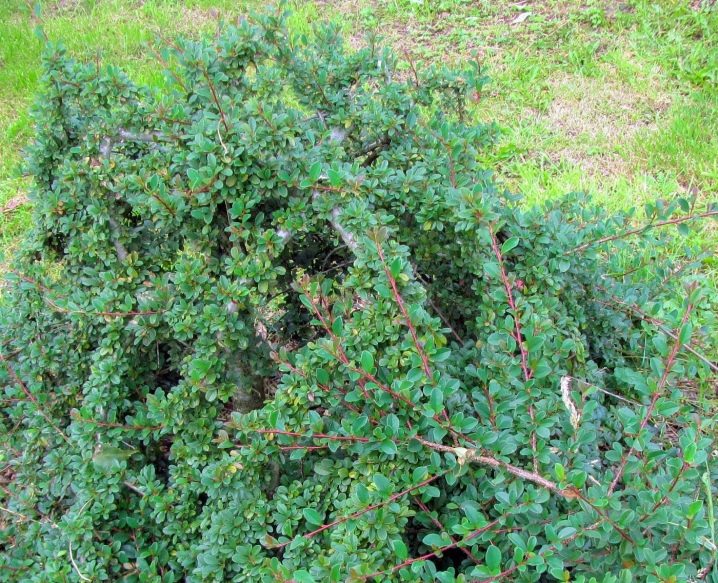
Boer
The low bush has special decorative qualities. "Boer" refers to dwarf plants, its height reaches only 50 centimeters. This variety has drooping shoots that slope downward. Often this very type is used to decorate gardens.The shrub blooms in May-June, while pink flowers appear on it. They gather in inflorescences. Spherical red fruits appear on the plant in late summer. It is best to grow this variety in well-lit areas, but at the same time such a cotoneaster is very sensitive to moisture levels, it should be moderate. The shrub will not require cutting.
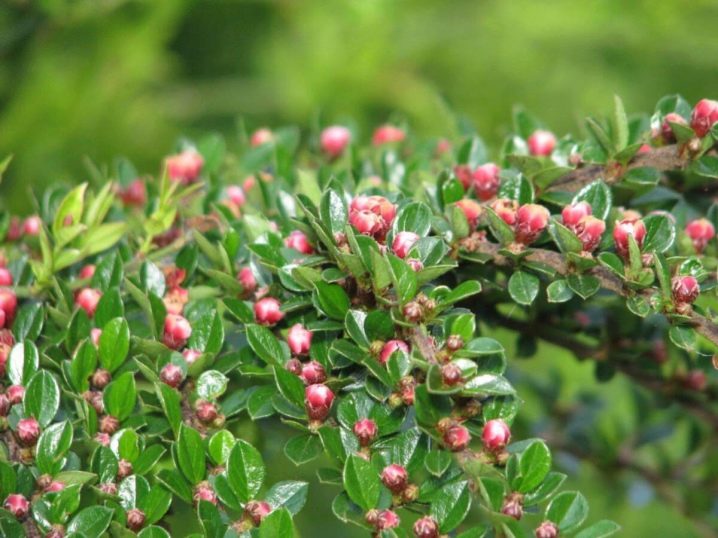
All-edge (ordinary)
This variety can be found in Asia and Europe. It is often used as an ornamental plant. The whole-edged cotoneaster is branched and leafy. Its height can reach up to 1.5 m. The leaf plates on shrubs are small in size, their shape is ovoid, the leaves are slightly wavy at the edges. This species blooms from late April to late May. The buds are small, pink in color. They gather in short and small inflorescences. Rounded berries have a bright red color.
It is best to plant such a cotoneaster on rocky soils.

Felt
This variety looks like a normal cotoneaster. Its stems are erect, young shoots are slightly pubescent. The leaves of vegetation are round, their length is on average 4-6 cm. Pink buds are collected in inflorescences. The peduncles of such a cotoneaster are pubescent. Berries of bright red color have a spherical shape; white pubescence can be seen on their surface. The flowering period is from May to June. The fruits ripen fully in mid-autumn. It is best grown on limestone.
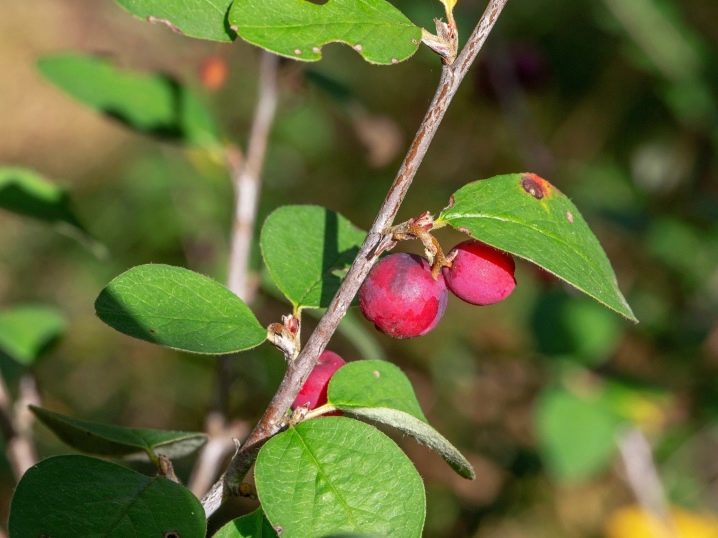
Holly
This variety can grow up to three meters. He prefers well-lit and semi-shaded places. It should be noted that this cotoneaster is very resistant to drought and frost. It is perfect for creating beautiful hedges. The holly-leaved species blooms profusely with bright red flowers. Its berries are black with a slight sheen. In the autumn season, the foliage is painted in yellow and red tones.
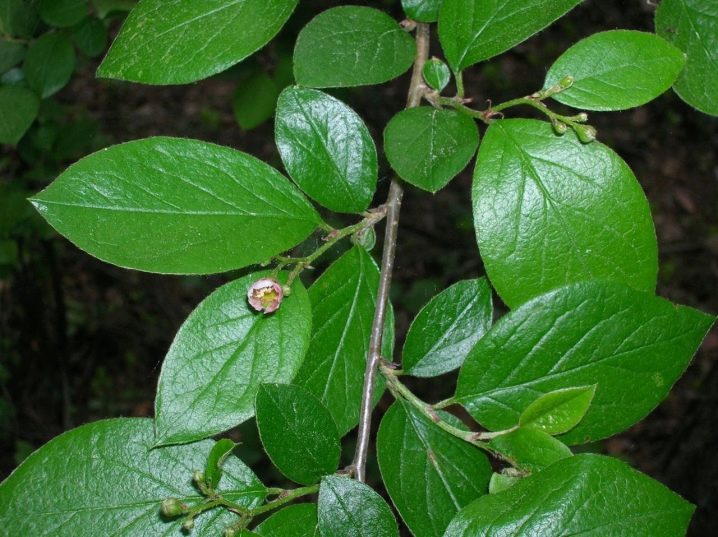
Horizontal (ground cover)
This species has creeping shoots. Shrubs are undersized (up to 80 cm high). The plant grows quickly to the sides, it can reach a width of up to two meters. Leaves are small, round in shape. Their colors are rich green. The leaf blades are evenly distributed on both sides of the stem. The flowers on the plant are pink or white. They bloom in May-June. The red berries are spherical. They will remain on the bushes even in winter. The horizontal cotoneaster prefers sunny areas.
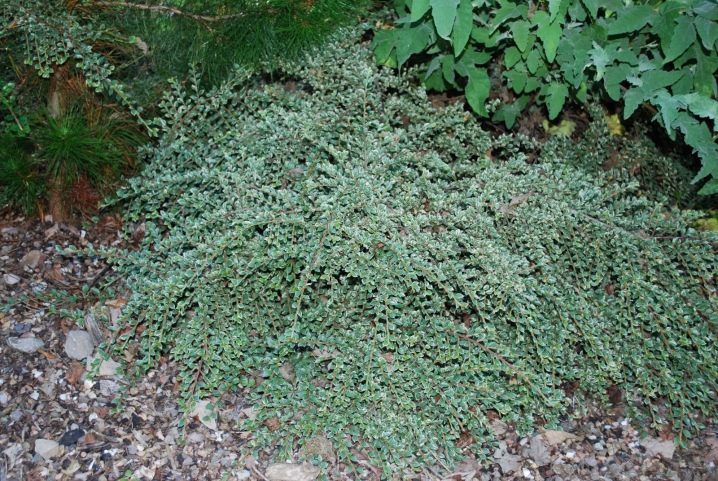
Brilliant
The vegetation has a rather high crown, its shoots can grow up to two meters. This type is great for group plantings to create beautiful hedges. The bush has carmine fruits, shiny leaf blades that turn red in the fall season.

Spread out
This type is considered one of the most beautiful. It is characterized by more abundant fruiting. The shrub is capable of growing up to two meters, it is widely branched. The spread-out cotoneaster has dark green leaves; in the fall, a shiny bloom forms on their surface. Elliptical fruits are dark red in color. They ripen at the end of the summer season or at the beginning of autumn. The spread-out cotoneaster is most often grown to form decorative group plantings.

Alaunsky
Plants of this variety are quite sprawling and branched. Their height can reach 1.5 m. Alaunsky cotoneaster has long ovoid or oblong elliptical leaves. His flowers are bisexual, their diameter is on average 4-5 mm, their color is light pink or white. Ripe fruits are berry-shaped, black with a bluish bloom.
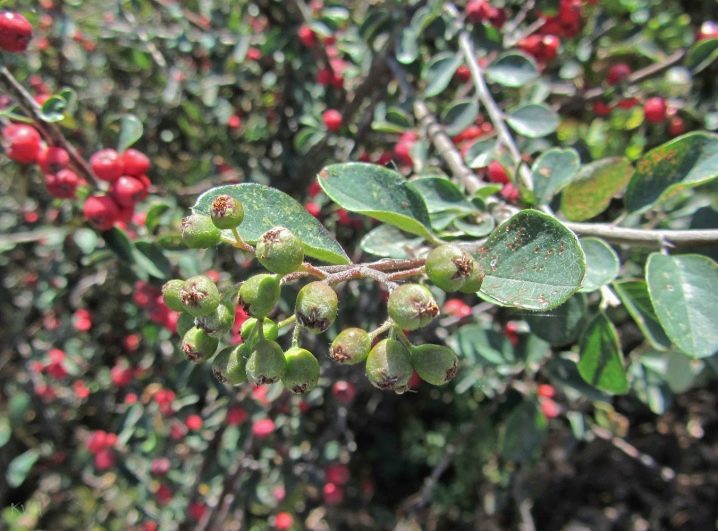
Pressed
Such a dwarf shrub can reach a height of 50 cm. The shoots are pressed to the ground.The leaves are rather small, round in shape, their color is light green. During flowering, a huge number of pink flowers are formed on the vegetation. The buds open in late spring.
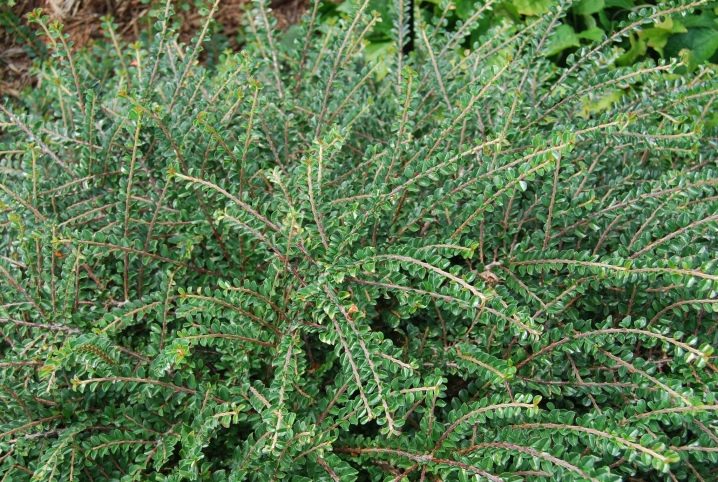
In addition to the above species, varieties and species such as Franchet, evergreen willow, multiflorous, Lucidus, Stockholm are very popular.
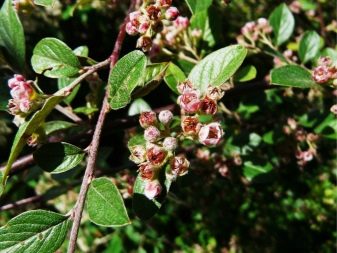
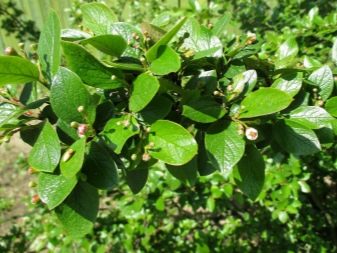
Landing
Now let's look at how to plant such vegetation. To begin with, you should choose the most suitable place for planting. It should be well lit by the sun, but it is permissible to plant the plant in partial shade.
The plant can thrive on talus as well as on rocky surfaces. Common and felt varieties prefer limestone soil. The smallest varieties should be planted 40-45 cm apart.
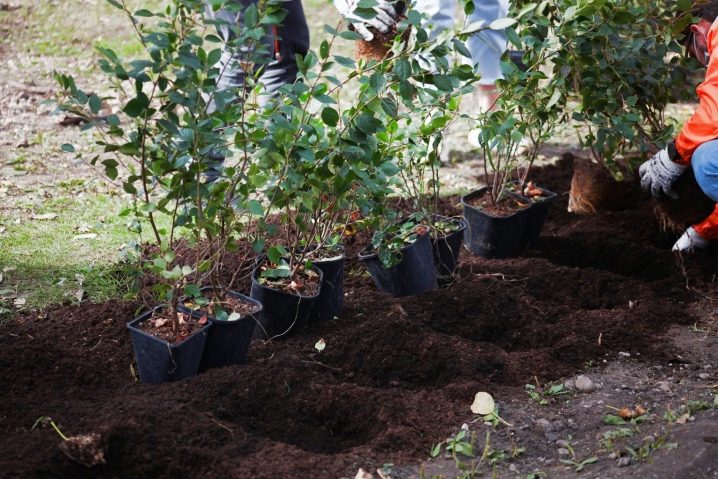
Tall species should be planted at a distance of 2-2.5 m. It is recommended to plant this vegetation in spring. Spring planting should be done after the soil has thawed. The plant can be planted in the fall (this option is suitable for warm regions).
It is important to properly prepare the seats. For this, pits are formed.
The dug soil must be fertilized. For this, it is better to use compost, as well as slaked lime.
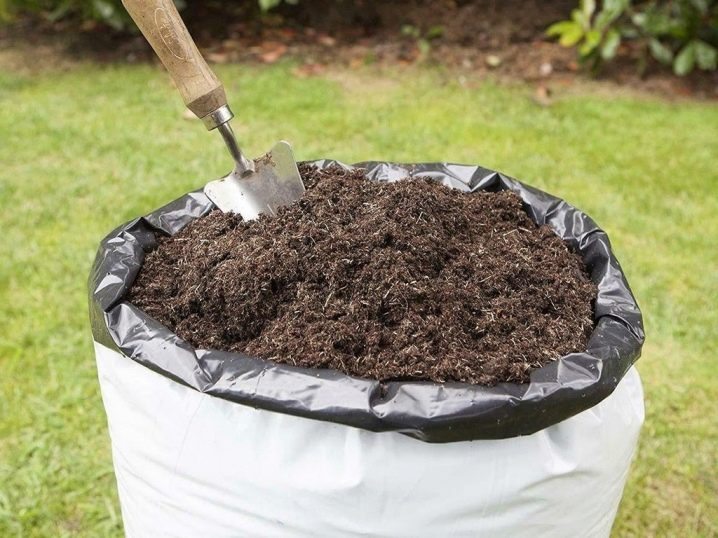
The seedlings are carefully placed in the pits, while the root collar should be a couple of centimeters above ground level. After planting, the vegetation is watered.
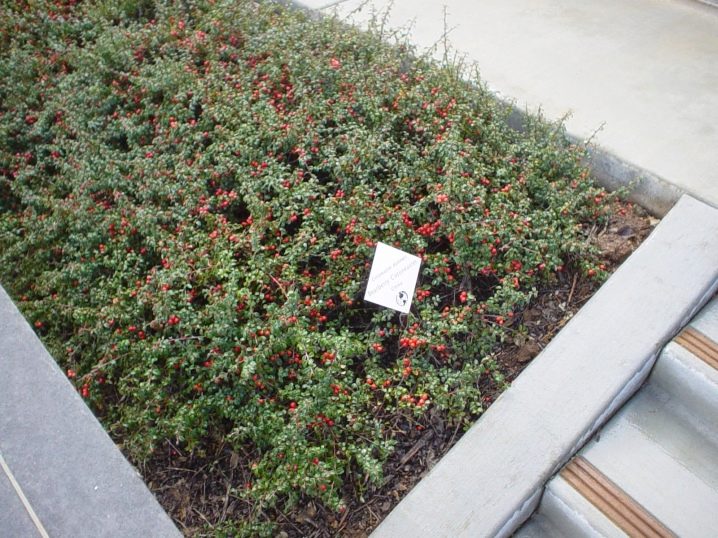
Care
In order for the cotoneaster on the trunk to grow quickly and fully develop in the open field, you should properly care for it.
Watering
Shrubs will need abundant watering during the growing season. Watering is carried out as the soil dries out. It is categorically impossible to water the bushes too abundantly, because they are very difficult to tolerate swampy lands.
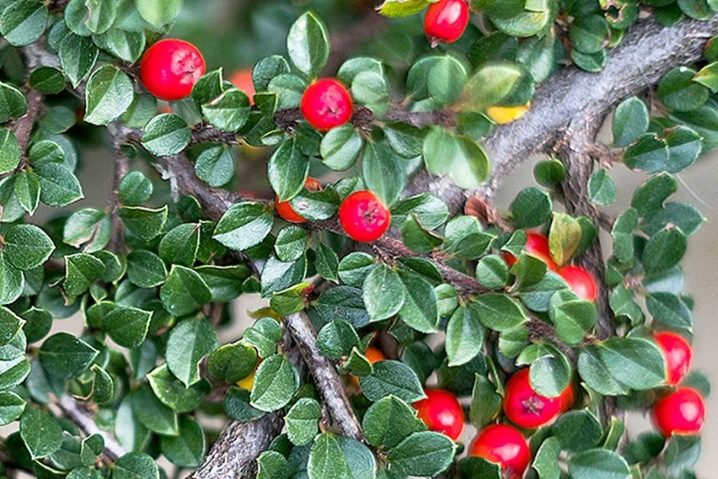
Top dressing
In the spring season, the cotoneaster will greatly need nitrogenous fertilizers. In the summer, it should be fed with compounds with phosphorus and potassium. In the fall, the bushes are fertilized with compounds with potassium. Before the onset of winter, the soil must be mulched with humus.
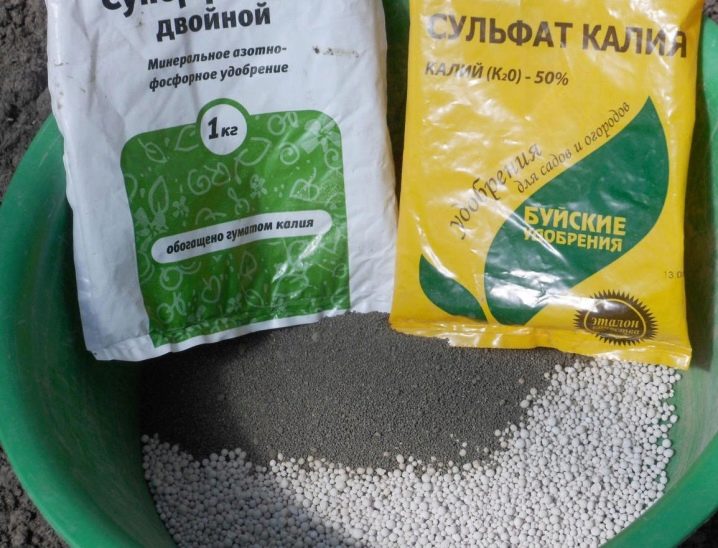
Pruning
The plant tolerates pruning quite easily. Formative pruning is done in the spring, before the buds open. This procedure stimulates shoot growth and branching. With its help, the bushes can be given a prismatic or conical shape.
Sanitary pruning can be done at any time of the year. This removes all broken and dried branches and leaves. Over the years, the oldest shoots should be cut to rejuvenate the bushes.
It is necessary to cut vegetation only with carefully processed sharpened tools.
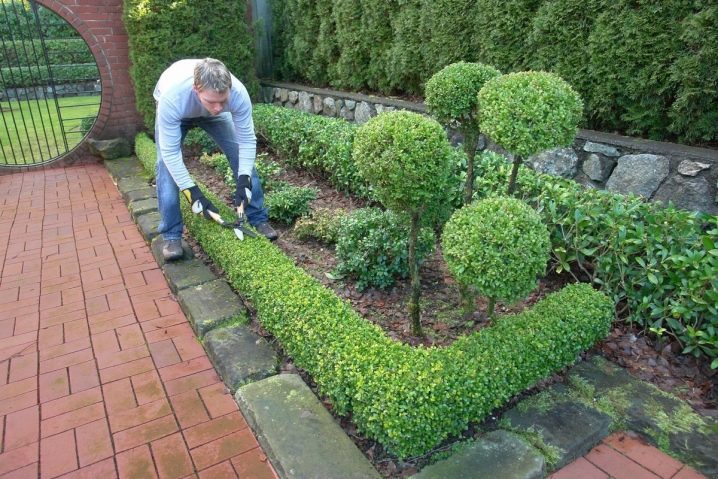
Wintering
Since the cotoneaster is a frost-resistant plant, it is easy for him to endure winter in the garden. If you are growing a variety that is not resistant to temperature extremes, the plantings should be covered in such a way as to protect the root system.
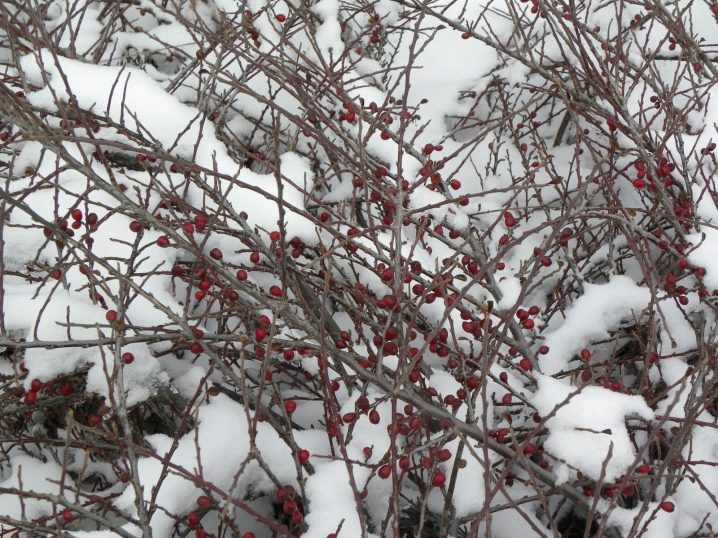
Reproduction
The cotoneaster can reproduce in several ways.
Seeds
In this case, the seeds are first stratified (5 to 12 months). To maximize germination, it is best to perform warm-cool stratification.
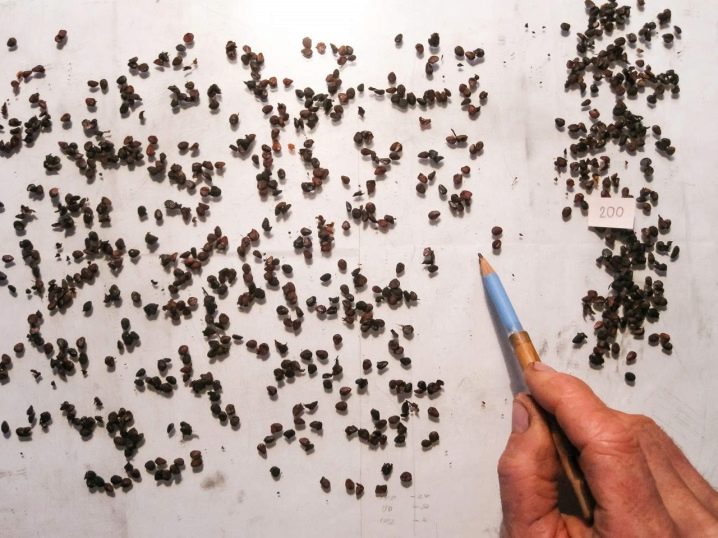
Layers
The bush reproduces quite simply by horizontal layers. To do this, you need to dig a hole, bend a healthy shoot to the surface of the earth. It is fixed with a hairpin. The earth is poured on top, and then it is all well watered. The rooted shoot is cut off, and then transplanted to another place.
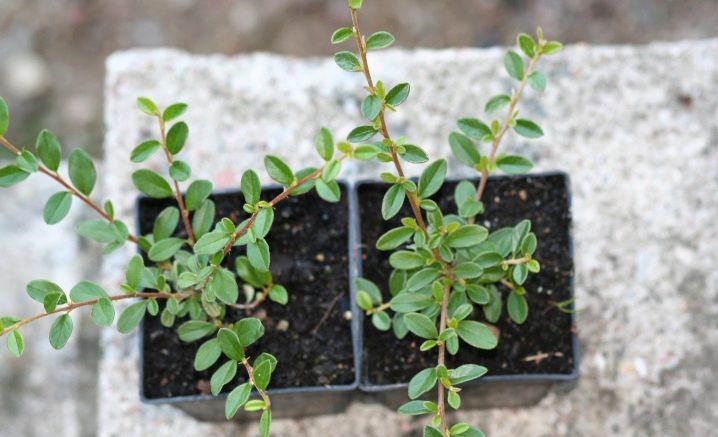
Cuttings
If you need to prepare more seedlings, then it is better to prepare the cuttings. Different breeding methods are used for different varieties. So, evergreen species propagate by semi-lignified shoots, deciduous species - by woody shoots. The shoot is cut from the original plant in the middle of summer. After that, the cut off part is divided into cuttings 11-12 cm long. All leaves should be removed from the cuttings, while only two upper leaves remain.The resulting parts are placed in a pot, a little soil and sand are poured there. Containers are exposed in the shade.
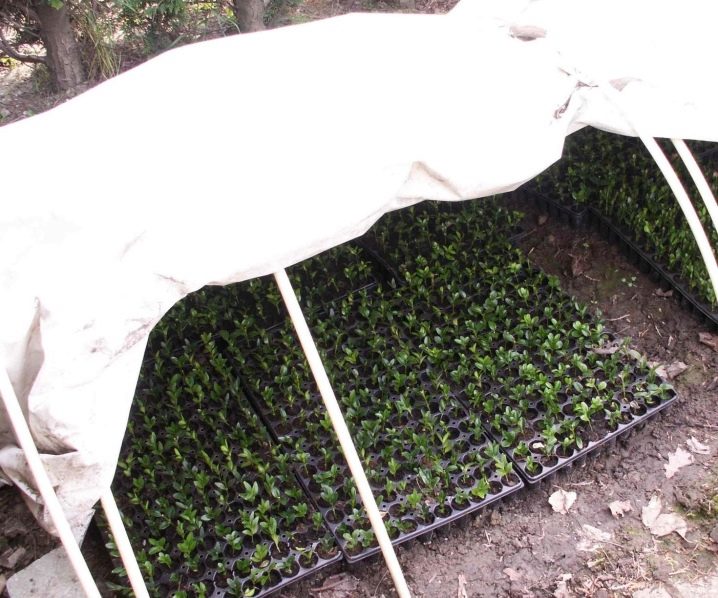
Diseases and pests
The cotoneaster is quite resistant to various infections and pests. But sometimes he is affected by the following diseases.
-
Powdery mildew. When damaged, a silvery bloom will begin to form on the foliage. In addition, the shrub is greatly slowed down in growth.
-
Rust. Rusty spots appear on the bushes during infection. They can be of different sizes.
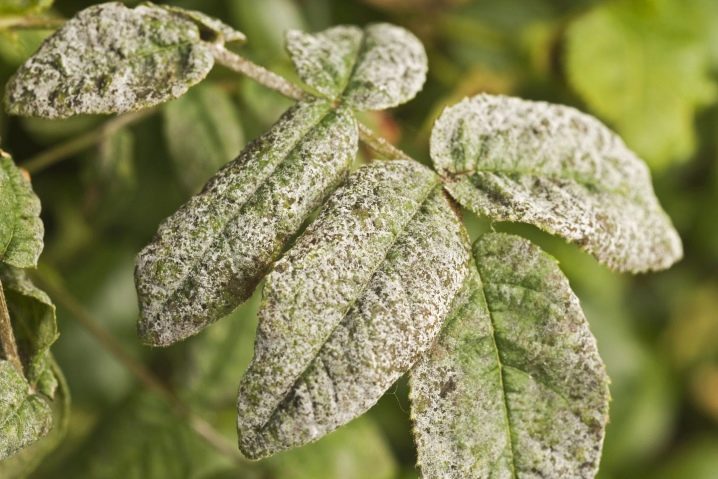
And also the cotoneaster can be damaged by aphids. At the same time, foliage begins to deform. Vegetation grows slowly and practically does not develop. Most often, aphid colonies can be found on fresh shoots in the spring. These insects can be yellow, green, brown or black.
If damaged, all damaged parts of the shrub are carefully removed with sharpened garden tools. After that, they are treated with fungicides. It is better to perform such procedures several times per season.
The first time spraying should be done after swelling of the buds, the second time - after flowering, and the third time - a couple of weeks after the second procedure.
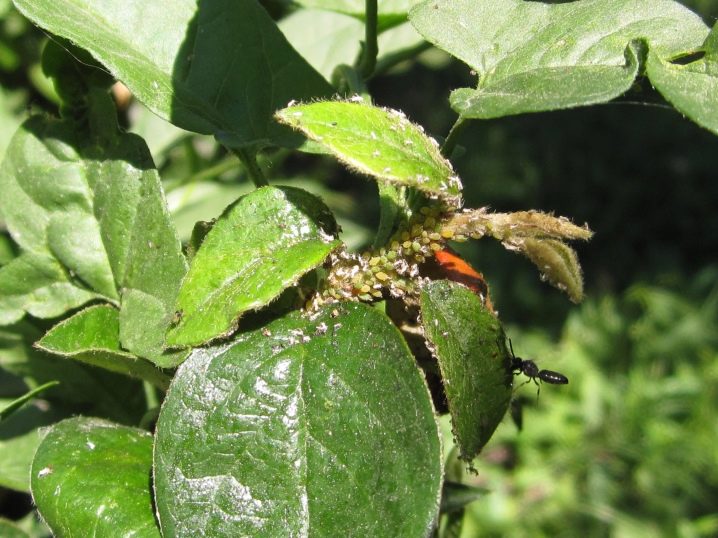
Application in landscape design
The cotoneaster will be able to fit into almost any landscape. You can plant such an ornamental plant along garden paths or steps. If desired, the bushes are combined with low-growing green spaces.
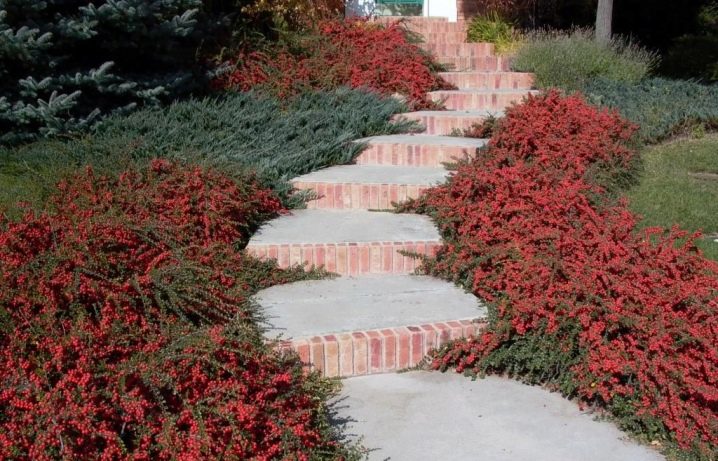
And you can also plant such ornamental vegetation in stone flower beds. In this case, it is better to select lush and branched varieties so that the composition turns out to be voluminous and more beautiful.

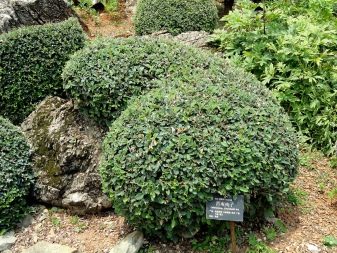
To decorate a summer cottage, you can plant a dwarf cotoneaster. It can be combined with light green undersized shrubs to create a contrasting composition. Similar plantings can be done along garden paths.


































































The comment was sent successfully.